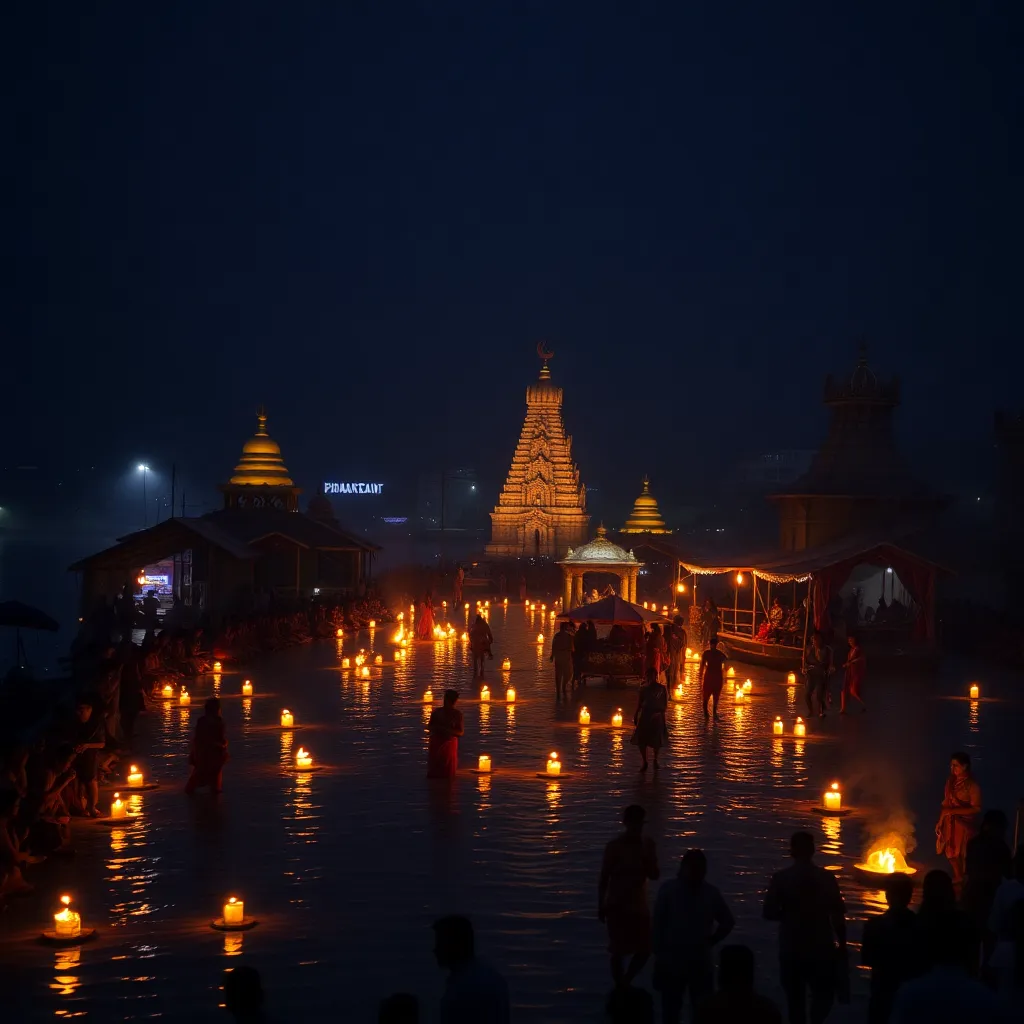
25-Oct-2024 , Updated on 10/25/2024 3:02:13 AM
Mahakumbh 2025: Best Spiritual Function
Mahakumbh 2025 is not just a fair but a mythological and religious fair that is held every 12 years, and millions of devotees visit the fair. A look at the 2025 gathering of people to wash their souls by bathing in holy waters at the biggest religious procession known to mankind. Drawing thousands of pilgrims, Mahakumbh is recorded as the largest religious event in the world by the Guinness World Records.
What is Kumbhmela?
The Kumbh Mela is one of the largest and most spiritually significant Hindu gatherings, held every twelve years at four major pilgrimage sites in India: Allahabad, Hardwar, Nasik, and Ujjain, respectively. It originated from classical mythology and symbolises the search for a life-giving Amrit, which was split in these four sites as a result of the conflict in a celestial battle between gods and demons. The Kumbh Mela is an elaborate journey and water baptism, and millions of pilgrims, sadhus, and prophets believe in it as the act of purification and attaining salvation on the banks of the most holy rivers during the prescribed period. They also provide extensive religious wordcraft, cultural staging, and prayers at this event. It has enormous importance not only from the religious point of view but also from the factual standpoint, as millions of people come together in one spot, which carries further potential in demonstrating multicultural Indian society. The Kumbh Mela festival was listed in the UNESCO list of intangible cultural heritage, representing the unity in devotion, the sanctity of Hinduism, and the eternal Hindu spirituality.
Mahakumbh is a part of the Kumbh Mela, a Hindu festival held at four locations: Allahabad (now called Prayagraj), Haridwar, Ujjain, and Nashik.
Prayagraj: Situated on the banks of the Holy Ganga, Yamuna, and the ethereal Saraswati River, Prayagraj festively celebrates the Kumbh Mela with a bare-bodied holy bath believed to shower sins and the soul’s freedom.
Haridwar: Located on the Ganga River belt, the Kumbh Mela of Haridwar is known for its calm and divine environment and prominent legendary significance for those who come seeking purification and the divine energy of the waters from the Himalayas.
Nashik: Known for being one of the sacred sites for the Hindu god Rameshwar along with the giant religious fair Kumbh Mela held on the bank of the Godavari river, Nashik is a must-visit destination for the devotees desiring to cleanse their sins by taking a dip in this sacred river.
Ujjain: Ujjain, situated on the holy banks of the Kshipra river, is the city of Lord Shiva, where the Kumbh Mela is held, so people come in thousands to seek blessings and to get purified in one of the holiest cities of India.
Both places take turns organising the festival every 12 years. Mahakumbh is a term used in Prayagraj, where the largest gathering is seen when three important rivers—the Ganga, Yamuna, and divine Saraswati join together.
The festival refers to the story of the mythology of Hinduism, where Gods and Devils fight over a container (Kumbh) that contains nectar. Everywhere the divine nectar touched, the earth became holy, and the Kumbh Mela was created. Faithful feel that taking a dip in these rivers during Mahakumbh will wash away all their sins and therefore offer a way to attain redemption.
The Mahakumbh is therefore regarded as a religious symbol of extreme purity and is attended by ascetics, saints, sadhus, and other citizens. It also happens to be at a particular time of the earth's cycle that is said to have far reaching effects on a person’s journey of the soul. Most of the religious activities that are observed during Mahakumbh involve having a bath in holy water at either an appropriate time or in an appropriate Kumbh.
The most significant of them is ‘’Shahi Snan’ or royal bath, where devotees and spiritual heads of the sect perform the ritual bath. Millions follow, and it is one of the most inspiring views one can ever see—an ocean of people who gather sharing the same faith. Other spiritual practices include conversations with acknowledged spiritual leaders, prayers, and feedings of the gathering to promote the spiritual endowment of the showering activity.
In 2013, Mahakumbh broke a record in the Guinness World Book when more than thirty million people took part in the Shahi Snan on a single day. Kumbh Mela is not just a religious fair; it is a singing of the faith and a testament to human survival. It is very hard in contemporary society to come across such a large following of a specific entity coming together to pray in almost complete harmony.

Why Join Mahakumbha 2025
Its size does not only qualify the festival as the world’s largest spiritual event, but it also has socio-cultural relevance. Mahakumbh is a congregation of different communities and forms of Hinduism, and it is the place where one gets to learn so many things from others. People of all classes come to these rivers owing to their faith and are united by the idea of spiritual purification.
There is already interest in Mahakumbh 2025. Authorities at the national level and different regions are trying to be ready to host millions of people who are expected to attend the occasion. This has been due to better infrastructure, better security measures, and better observable and sensed cleanliness pervading the region to ensure a large turnout of people.
However, apart from being a great festival that attracts millions of people, Mahakumbh represents the great spiritual tradition of India. Importantly, the level of commitment seen here is unmatched, and even the size of the structures exhibited cannot be paralleled anywhere else.
If a person is on the spiritual journey to attain moksha, wants to become a monarch, or just wants to see the largest demographic of humans at one point in time, Mahakumbh 2025 is a must-watch.

Student
hey there! i am a student currently pursuing my bachelors with a keen interest in writing., I am fueled by a deep love for storytelling and a flair for creating captivating narratives. Armed with a passion for language and a keen eye for detail, I strive to craft compelling copy that leaves a lasting impact.
Join Our Newsletter
Subscribe to our newsletter to receive emails about new views posts, releases and updates.
Copyright 2010 - 2025 MindStick Software Pvt. Ltd. All Rights Reserved Privacy Policy | Terms & Conditions | Cookie Policy